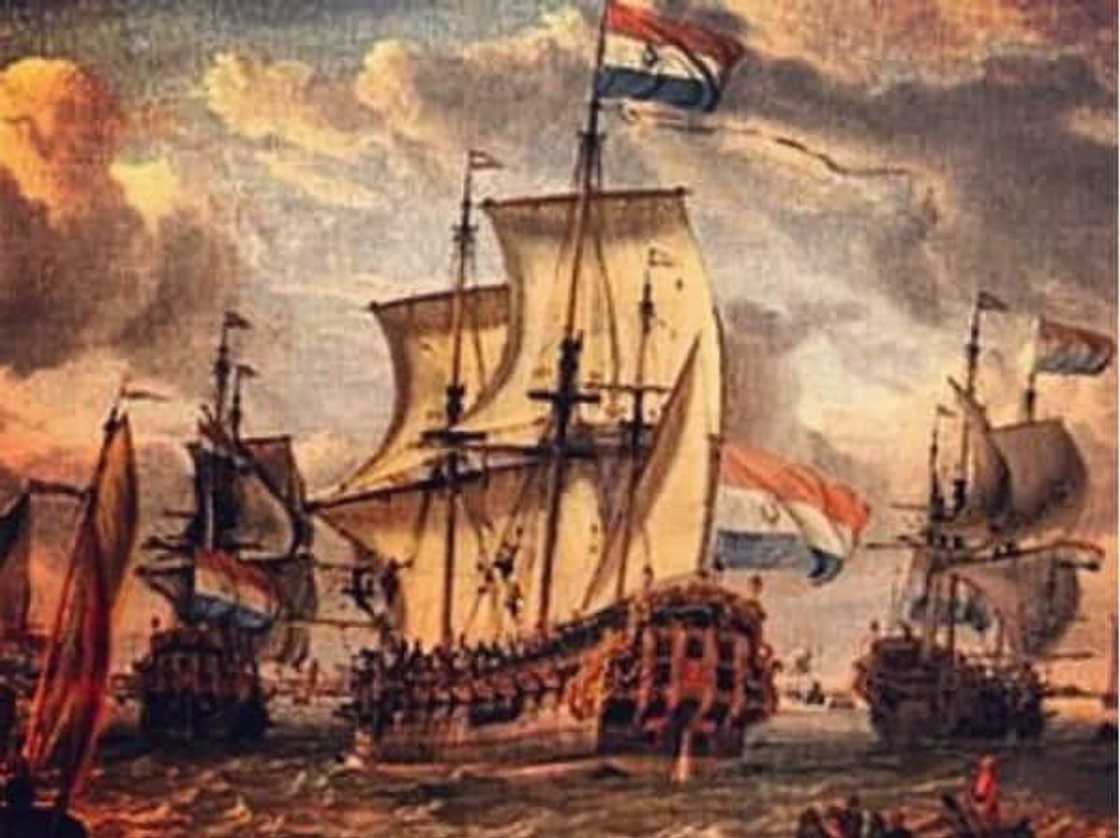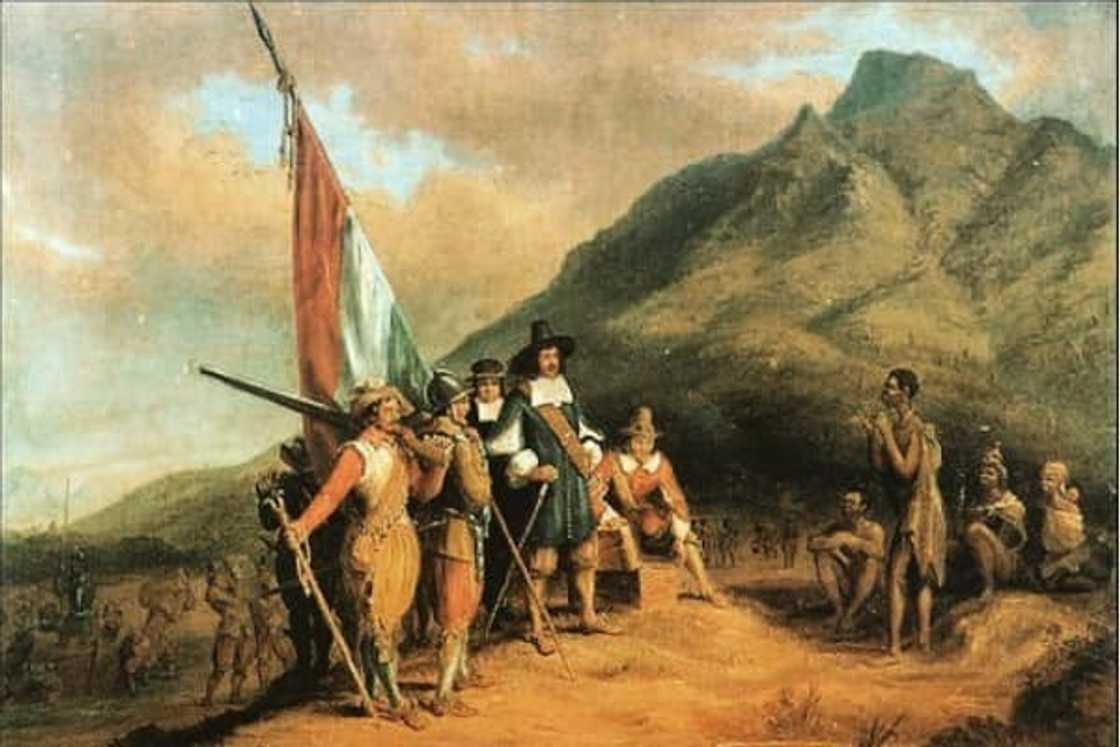Jan van Riebeeck biography: death, facts and life achievements
Who was the first white person in South Africa? According to the records in history, the first white person to set foot in South Africa established a Dutch settlement in Cape Town. His visit to the country had so much impact on the country's history. Jan van Riebeeck biography contains some of the hidden facts that most people do not know. Here is all you need to know about him.

Source: UGC
Jan Van Riebeeck is one of the first foreigners to set foot in South Africa. As a sailor, he set voyage in Cape Town. His visit to South Africa significantly impacted the country's history, and the reasons for his visit are deeply rooted in his biography. How he ended up being a sailor is another reason why most people would spare some time to go through his biography. These details will equip you with all the information you might need to know about him.
Jan Van Riebeek biography
He was born in April 1619. He was the son of a surgeon, and being brought up by a surgeon led to his skill in the same field as he learnt through apprenticeship. He married his wife Maria de la Quellerie, with whom he had eight sons. One of his sons, Abraham van Riebeeck, became the governor of the Dutch East Indies.
READ ALSO: Sol Kerzner biography, age, house, wife, family and net worth
Jan Van Riebeek life achievements
Jan worked with the Vereenigde Oost-Indische Compagnie (VOC); Dutch East India Company as an assistant surgeon. His first experience while working with the company was sailing to Batavia, after which he sailed to Japan, and then, he was given a trading station in Japan. It was, later on, discovered that he was using the station for his personal gains. The Dutch authorities, therefore, recalled him from his position.

Source: UGC
It was during one of his voyages from Indochina that he discovered the Table Bay near the Cape of Good Hope. He saw the viability of the bay as a location for sailors to get fresh supplies. According to the several recommendations that had been made about the same, Jan van Riebeeck arranged for another voyage in 1651. He travelled in the company of his wife and son, and eighty-two other men and eight women. They came with two other ships; the De Goede Hoop and the Rejiger.
By April 1652, the Jan Van Riebeeck ships were already docking at their destination. Within the first week of arrival, work was already in progress at the Fort of Good Hope. The station was to supply the sailors with fresh water, vegetables, fruits, and meat. The station also aimed at providing medical attention to the sailors who would stop there.
The operations at the station were affected by the winter season that year, especially since they lived in wooden huts. They also ran short of food supplies, and by the time the season came to an end, they had lost nineteen men. The rest of the men, led by their leader, went ahead to set up a European settlement in the region.
Working under the recommendations of the ‘Remonstrantie’, a document whose origin was the Netherlands, that gave the proposals for the project that the company had intended initially. The company instructed Jan Van Riebeeck and his team not to colonise the area. Instead, they were asked to erect a flagpole that would direct boats and ships into the bay.
Besides erecting the flagpole, they were also required to build the fort. Things did not go as planned as there emerged a war between the Netherlands and England. The war lasted for two years, and it caused the urgency of the completion of the fort, which led to the construction of the Castle of Good Hope in 1666. The construction of the castle went for thirteen more years after Jan Van Riebeeck had left the Cape.
Who colonised South Africa?

Source: UGC
The intention of the Dutch when they first got to the Cape of Good Hope in South Africa was to make good use of the location to establish stations that would offer services to the sailors. Their continued business operations took root after the departure of Jan Van Riebeeck. Within no time, they received permits that allowed them to practise farming along the Liesbeeck River in order to counter the problem of wheat shortage that was emerging slowly. However, the permit forbade them from trading with any other people apart from the VOC.
Increased demand for the products that they dealt with led to a shortage of labour. Since the neighbouring communities were the Khoikhoi and the San, who were uncooperative, the Dutch opted to bring slaves from Batavia and Madagascar.
As the years went by, their business became more lucrative, and they had to encroach into the land that belonged to the Khoikhoi and the San. They opted for this option since these communities lived nomadic lives and had no written proof of ownership of the land. For this reason, Van Riebeeck did not acknowledge that the land belonged to them, and so he denied them their rights to owning the land. This move angered the Khoikhoi and the San, causing them to organise a series of unsuccessful uprisings, trying to get their land back. The riots lasted for close to one hundred and fifty years.
While at the Cape, he tried to enhance the aesthetic value of the cape by planting crops. Some of the crops that he planted included grapes, cereals, apples, citrus potatoes, and ground nuts. According to the recommendations of the VOC, as the leader, he kept the Jan Van Riebeeck diary, where he kept the daily entry of the activities at the Cape. The information in the diary would also be used for future explorations.
In retaliation, Jan Van Riebeeck constructed a Helge to surround the settlement. He also sent a group of men who went to survey the hinterland. By then, he was still the leader of the Dutch settlement, until in 1662, when he left.
How did Jan Van Riebeeck die?

Source: UGC
He had so much influence in Cape Town and the Dutch community that people might be interested in knowing what happened to him after he left the Cape. Others might want to know, 'when did Jan Van Riebeeck die?' According to the information that has been documented about him, Jan Van Riebeeck died in 1677, years after he had left the Cape. He died in Batavia, at the age of fifty-seven.
In his memory, the Dutch community celebrated the 300th anniversary in 1952. The anniversary marked three hundred years after Jan Van Riebeeck had gotten to South Africa. They since then declared April 6th a national holiday, which they called People Protest Day. In 1980, the holiday was changed to Founders Day. Later, in 1994, the African National Congress party did away with the holiday.
Jan Van Riebeeck had so much influence in the history of the Dutch in South Africa. His significance and that of his wife is relevant in Adderley Street, Cape Town. His coming had a significant influence in South Africa as a country.
READ ALSO:
- Dutch 'fashion police' can now confiscate clothes from people who look too poor to afford them
- Nina Hastie biography, age, tattoos, boyfriend and addiction
- Apartheid: A (very) brief history
Source: Briefly News






